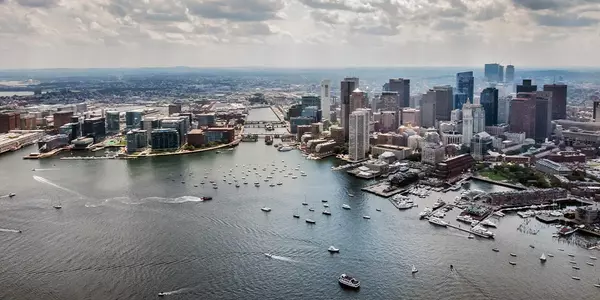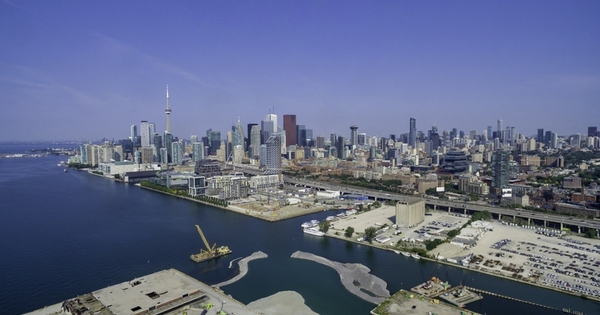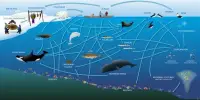The creation of new land on waterfronts, also known as land reclamation or land reclamation, has been increasing globally in recent years, according to a study published in the journal Nature Sustainability in 2021. The study found that between 1990 and 2015, over 33,700 hectares of new land was created on waterfronts, with the majority of this occurring in Asia. The reasons for this trend vary, but include the need for additional space for development, urbanization, and economic growth, as well as to protect low-lying coastal areas from sea-level rise and flooding. Land reclamation can also provide new areas for recreation and tourism.
Humans are artificially expanding the coastlines of cities by extending industrial ports and developing luxury residential waterfronts. According to a new study, developers have added over 2,350 square kilometers of land (900 square miles, or roughly 40 Manhattans) to major city coastlines since 2000.
The study presents the first global assessment of coastal land reclamation, which is the process of constructing new land or filling in coastal water bodies, including wetlands, in order to expand the coastline. The researchers used satellite imagery to examine land changes in 135 cities with populations of at least one million people, 106 of which have expanded their coastlines. The study was published in AGU’s journal Earth’s Future, which publishes interdisciplinary research on our planet and its inhabitants past, present, and future.
It’s very important to capture this. Our population is growing, and so is our carbon footprint. There will invariably be environmental consequences.
Robert Nicholls
“Population growth is not the only driver of coastal land reclamation,” the study’s authors said. “We expect that reclamation would continue to be popular in places that not only experience urban growth but also are eager to re-brand themselves for reputation and revenue.”
Today, coastal land reclamation is most common in the Global South, where many economies are expanding rapidly. The Global North dominated the use of coastal land construction in the previous century and before. According to the study, China, Indonesia, and the UAE added the most land area, with port expansion being the most common reason for development. Shanghai has alone added approximately 350 square kilometers (135 square miles) of land. In the United States, only Los Angeles has added land area in the last 20 years, with 0.29 square kilometers (0.1 square miles) constructed.
“It’s very important to capture this,” said Robert Nicholls, a climate adaptation researcher at the University of East Anglia who was not involved in the study. “Our population is growing, and so is our carbon footprint. There will invariably be environmental consequences.”
Dhritiraj Sengupta, a physical geographer at the University of Southampton, and his colleagues discovered that industrialization and a need for urban space have driven much coastal land reclamation, while a smaller proportion of expansion projects are for “prestige,” such as Dubai’s palm tree-shaped islands.

Approximately 70% of coastal land expansion has occurred in low-lying areas that are likely to be subject to extreme sea level rise by the end of the century. The environmental impacts and projected coastal inundation indicate that these developed coastlines are not sustainable, but cities will likely continue to build them, according to the authors.
Sengupta stated that some cities, including Shanghai, are developing new land while keeping future sea level rise in mind. According to him, selling a development as “green” is easier than selling it as an adaptation to sea level rise. It is difficult to assess the height of new land on a global scale. This is still an intriguing research question for scientists like Sengupta.
Ecological impacts
Typically, new land is created by piling sediments in the ocean, constructing cement sea walls and structures to contain sediments or cement, or filling in wetlands and other shallow water bodies near the coast. Other research has shown that these methods require massive amounts of sediment and permanently disrupt ecosystems.
“The environmental consequences of reclamation are enormous. Reclamation is a massive civil engineering project that fundamentally changes the characteristics of the space that it aims to improve “Sengupta and his colleagues stated. Coastal wetlands are particularly vulnerable. “In the Yellow Sea, for example, reclamation has resulted in the loss of more than half of the tidal flats.”
“Environmental consequences should be considered as part of the overall approval process” for coastal land construction, Nicholls said. “The creation of land will make sense where it’s needed, but you have to do it in a responsible way … and think about whether it is really needed. Those are value judgments.” Nicholls also raised that these projects make up a small fraction of the world’s coastlines and are often on already urbanized shores. (By comparison, an estimated 14% of shorelines in the United States alone are ‘armored’ by seawalls and jetties.)
Other environmental effects include the addition of new sources of point-source pollution, changes in sediment movement patterns, and changes in the biosphere, all of which can have an impact on ocean-based economies such as fishing and tourism. Inequitable access to newly created shoreline can exacerbate class differences.
Reclamation also has an impact on distant ecosystems where fill materials like sand and gravel are mined. Due to a global sand shortage, construction companies are quarrying sand and clay from the seabed, destroying benthic ecosystems, according to Sengupta.
















